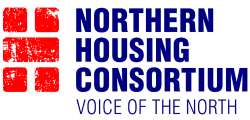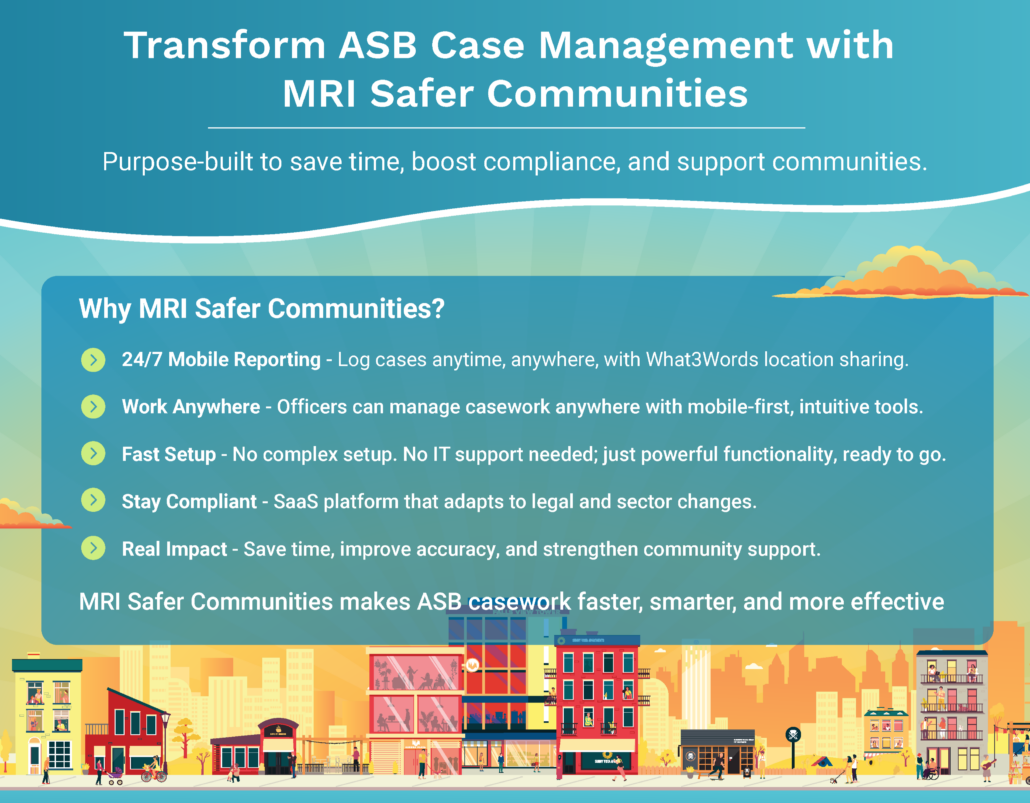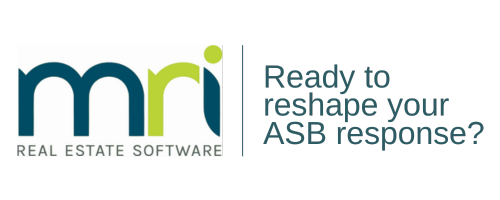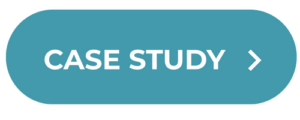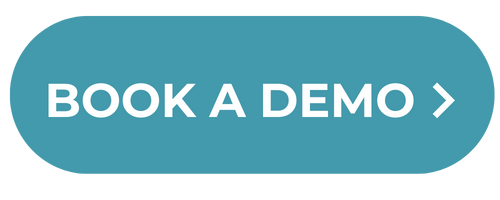Putting Safety First: Why Collaboration and Innovation Are Reshaping ASB Response
Authored by Charles Pasfield at MRI Software
Antisocial behaviour (ASB) is rapidly rising up the agenda for housing providers, not only in volume but in complexity. From noise complaints and lifestyle clashes to mental health concerns and safeguarding risks, the pressures on community safety teams have never been greater. The sector is at a key turning point, one where smarter tools, deeper collaboration, and stronger partnerships must work in tandem to deliver real impact.
That belief was at the heart of a recent Community Safety Roundtable, delivered in partnership with RHE Global, founders of The Noise App which is the number one noise tool for neighbourhood noise and community safety noise management in the UK.. The session brought together housing professionals, product specialists, and practitioners at the sharp end of community safety to share experiences, explore challenges, and set out a shared vision for change.
The realities of today’s landscape
ASB is no longer the occasional neighbour dispute, it’s become a core operational pressure for housing providers with many contributing factors that include lower tolerance levels, more vulnerable tenants, and rising expectations from residents. At the same time, new legislation is on the horizon, including the anticipated Respect Orders and enhanced closure powers which adds further complexity and responsibility for landlords.
These shifts demand a new approach, not just policy changes or process tweaks, but a rethink of how housing organisations coordinate, record, investigate, and resolve ASB cases.
Why integration is now a necessity
One of the recurring themes from the roundtable was system fragmentation. Housing associations, local authorities, police, and partner agencies often operate in silos, each with their own systems, processes, and barriers to sharing information. This results in duplicated effort, missed risks, and residents left feeling unheard.
Collaborations between technology providers – like MRI Software’s partnership with RHE – are key to bridging gaps through seamless integration. Together, the platforms offer housing providers a comprehensive, joined-up view of residents, properties, and case histories enabling teams to act faster and more effectively.
Stephen Gordon, Head of Neighbourhood at Gentoo, reinforced this,
“Our vision is that the customer receives a more rounded approach to their needs. If we can see a noise complaint, a support need, and a tenancy issue all in one place, we can tailor our response and resolve issues faster.”
Designed for Safeguarding teams
The practical realities of casework were central to the development of Safer Communities. Community safety officers are often field-based, juggling competing demands and operating under intense scrutiny. They need intuitive, mobile-responsive tools that enhance their work.
Safer Communities includes key features that include:
- Mobile-enabled with dictation tools to support hands-free reporting in the field
- Built-In case templates and workflows to remove the administration burden
- Consolidated data, reporting with integrated legal tracking for enforcement actions
- Self-service portals for evidence submission and real-time updates
- What 3 Words integration & Hotspot mapping to improve victim safety
These go beyond being just technical features, they are user-driven enhancements, shaped by feedback from officers on the ground.
AI with a purpose
Artificial intelligence (AI) is a hot topic across all industries, and housing is no exception. At MRI, we’re pursuing AI for where it can really add value by implementing it where it demonstrably reduces risk, improves quality, or saves time.
One example is voice-to-text transcription for case notes, saving officers time while increasing accuracy. Another is the note summarisation tool and evidence severity scoring, where AI can identify high-risk content (such as potential safeguarding concerns) buried in case diaries or uploaded audio files.
Jim Nixon of RHE Global highlighted,
“AI won’t do your job for you, but it will make sure you don’t miss something important. We’ve seen cases where key risk indicators were buried in manual notes and went unnoticed; AI helps surface these faster.”
A true partnership, not a buzzword
The word ‘partnership’ can sometimes be overused in our sector. But in this scenario, the collaboration with RHE Global is not a joint branding venture, it’s about combining two complementary systems to deliver a better service to residents and more support to housing staff.
Gentoo is already adopting this integrated approach, and early feedback has been positive.
“It ticks every box,” Stephen told us. “From case management to reporting, the integration between MRI Software and the Noise App is going to make a huge difference.”
And this is only the beginning. We’re committed to continually improving the tools, expanding functionality, and listening closely to the housing professionals using them.
A call to action
Community safety is no longer the preserve of Safeguarding teams, it’s a shared, sector -wide challenge that requires shared solutions. The demand for transparency, accountability, and empathy is rising. Technology can help meet that demand, but only when it’s informed by real experience and deployed with purpose.
MRI’s goal is simple- to build tools that make it easier for housing professionals to deliver safer, stronger communities. Through partnerships such as the one with RHE Global, we can achieve that goal faster and more effectively.
When technology meets trust, and innovation meets lived experience, we’re able to go beyond managing ASB and Domestic Abuse. We can start preventing it.
